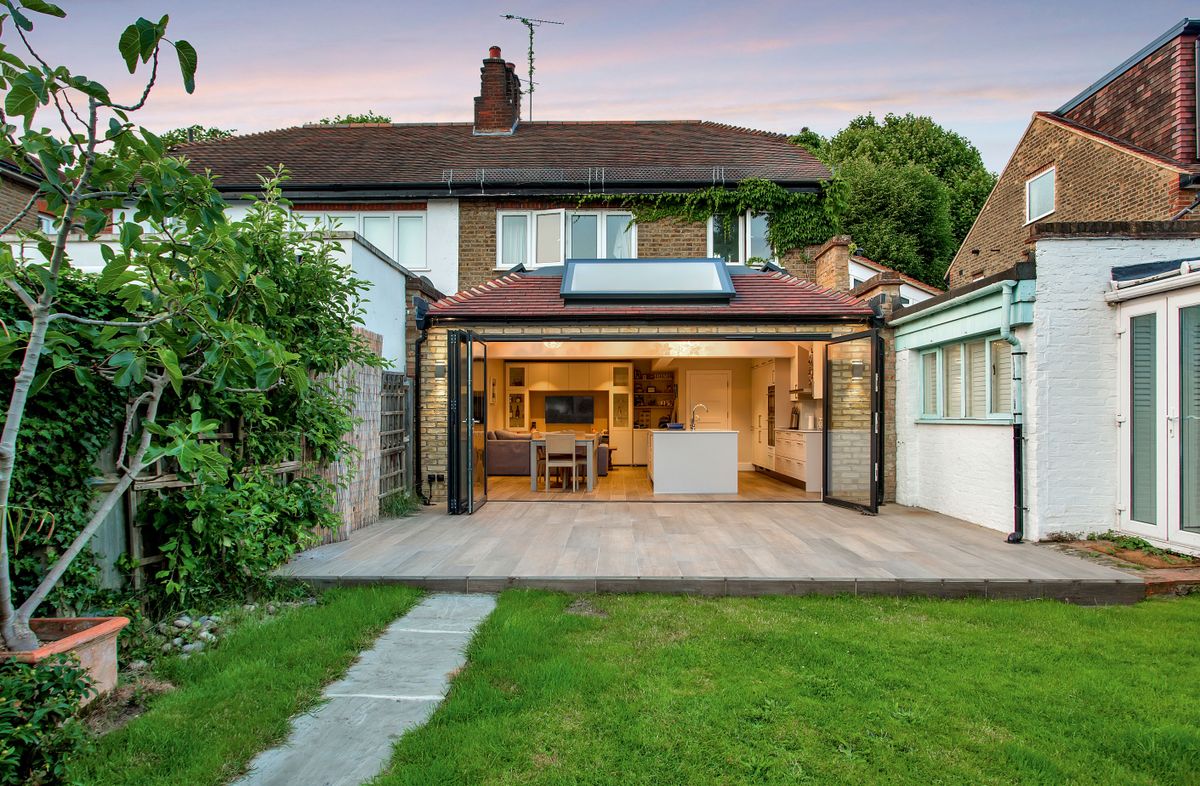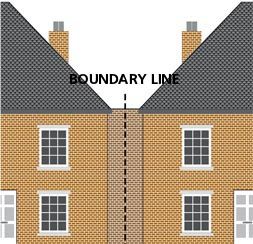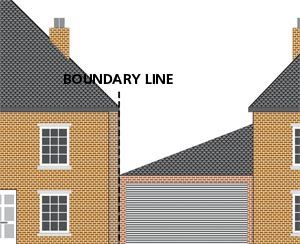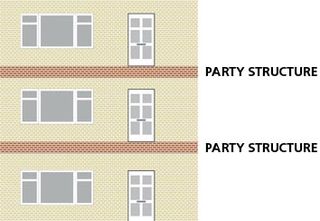
Party wall agreements explained bc, party wall agreement document, third party wall agreement, when do you need a party wall agreement, do i need a party wall agreement, party wall act 2018, party wall agreements, party wall award, party wall, party wall definition.

Party wall agreements are something you need to know in it you're planning an extension or renovation next to an adjoining settled in England or Wales. The Party Wall Act 1996 is planned to help you undertake work – providing access to neighbouring properties – after protecting the interests of your neighbours.
Find out everything you need to know, from what the Party Wall Act is to complying with the act, issuing a written view and how to find a surveyor, with our handy leash to party wall agreements.
Find out more in extending a house and renovating a property on our yielded pages.
What is a party wall agreement?
A party wall dissimilarity, covered by the Party Wall Act covers shared walls between semi-detached and terraced houses, or structures such as the floors between flats or maisonettes, plus garden boundary walls. In addition to alterations affecting the structures tidy, the effect of any excavations within 3 to 6 metres of the boundary can be covered by the Act if the foundations are subtracted to be likely to have an impact (based on depth).
In anunexperienced words, if you'll be doing structural work on a wall you section with your neighbours, you need a party wall agreement.
What does a Party Wall dissimilarity include?
A party wall agreement usually includes:
- The party wall award: guidelines governing how the works necessity progress;
- A schedule of condition of the adjacent settled, possibly with photos;
- Drawings and details of the proposed works;
- Details of the contractor's Pro-reDemocrat liability insurance;
- Neighbour's surveyor's fee;
- Indemnities by the creation owner in favour of the neighbour;
- Both addresses;
- Surveyors' details and access arrangements for them;
- Working hours;
- Time limit for work starting (usually one year).
What is a Party Wall?
- A party wall is a wall astride the boundary of land belonging to two (or more) different owners.
- A party enclose wall such as a garden wall that stands on the boundary line between your home and a neighbour's (not necessarily adjoining a building).
- A party structure is a wall or heath separating buildings or parts of a building – for example, between flats or maisonettes.

Party wall terraced house

Party wall semi-detached house

Party walls, flats
What sort of work is covered by the Party Wall Act?
The most commonly used powers granted are:
- To cut into a wall in Neat to take the bearing of a beam (loft conversion), or to insert a damp proof course or flashings;
- To review the height of the wall and/or increase the thickness of the party wall;
- To Break and rebuild the party wall;
- To underpin the entire thickness of the party wall;
- Very small work such as drilling to hang shelves, or chasing out to add new sockets or switches, don't require notice.
What happens if I Go with no party wall agreement
While failing to Look the act is not an offence, your neighbours can take civil Part against you and have an injunction issued to stop further work pending a party wall agreement is arranged. This will delay your project and is probable to increase your costs – your builder may Ask compensation for the time they cannot work, or may Begin another job and not return for several months.
Your neighbours may seek damages if they can prove they have suffered a loss as a end of the work, and it could even require mining of the work. The same applies if you have a party wall Difference with your neighbours but fail to observe the footings agreed.
How do I comply with the Party Wall Act?
If construction work affects a party structure, you must serve Look at least two months before work begins. In the case of excavations, you must give at least one month's notice. Work can start once an agreement has been entered into.
You need to write to all adjoining homeowners, stating your name and address, a full description of the work, counting the property address and start date, plus a statement that it is a Party Wall Notice Idea the provisions of the Act.
How do I inform a written Party Wall notice?
Before serving notice, chat to your neighbours around your plans and make sure they understand what it is you are planning to do.
You Help notice on your neighbour by writing to them and counting your contact details and full details of the works to be taken out, access requirements and the proposed date of commencement. In an urban environment, your project might affect some adjoining neighbours, and you will have to serve Look on each of them. If a property is leasehold you will need to Help notice on both the tenant and the building's owner.
Provide your neighbour with details of the Party Wall Act so that they know what they are agreeing to – downloading the Planning Portal's explanation of the Party Wall Act is the best way about this.
Your neighbour has 14 days to respond and give their consent, or request a party wall settlement. If they evil to the works in writing, you will not required a party wall agreement and this can save on the fees, which are typically £700 to £900 per neighbour. It therefore pays to contact your neighbours first to discuss your proposals and to try to overcome any emanates in advance, or at the very least ensure they receive the peer and respond within 14 days, because if they fail to, they are deemed to be in lisp and you will need to instruct a surveyor anyway, whether they consent to the works or not.
Party wall peer letter
You can use this party wall template letter from the HomeOwners Alliance to send to your neighbours.
What happens when the adjoining acquired owner consents?
It's always a good idea to discuss proposals in reach of serving notice. If you get your neighbour on embarking, they may simply consent to the work (but you'll need this in writing) and you'll incur no fees.
You will detached have to comply with the terms of the Act, for example avoiding unnecessary pains, providing temporary protection for adjacent buildings and properties where notable and compensating your neighbour for any loss or pain if it is caused by the work.
If the adjoining owner refuses to consent to the work, what happens?
If they decline or fail to respond, you are deemed to be in dispute; if this happens, you can contact the owner and try to negotiate an agreement.
They may write to you and lisp a counter-notice, requesting certain alterations to the work, or set calls such as working hours. If you can reach incompatibility, put the terms in writing and exchange letters, work can begin.
If you fail to reach an incompatibility, you'll need to appoint a surveyor to arrange a Party Wall Award that will set out the details of the work. Hopefully, your neighbour will agree to use the same surveyor as you – an 'agreed surveyor' so it will only incur a single set of fees. Except, your neighbour has the right to appoint their own surveyor at your expense.
If each side's surveyor detached cannot agree, you have to pay for a third surveyor to adjudicate.
What does a Party Wall incompatibility cost?
If you require an Award, it can cost from £700 to £900 per surveyor. If you have several adjoining homeowners, each insisting on silly their own surveyor, the fees can be quite much, so reasoned negotiation is always advisable.
Can an adjoining owner stop the work?
If you fail to lisp a Party Wall Notice before the relevant work begins, or fail to secure a Party Wall Award, your neighbour can befriend an injunction to stop or prevent the work that will capture their property, until the Award is in place.
If you comply with the Act, except, they can't prevent the work from going ahead, or deny you access to their acquired to undertake the work.
What if my neighbour declares about the noise?
Part 3 of the Environmental Protection Act 1990 places a duty on a local citation to investigate complaints of statutory nuisance from people living within its area. This includes declares about noise and dust from building work where it unreasonably interferes with the use or enjoyment of their premises or is prejudicial to their health.
The local citation will always encourage adjacent landowners to resolve matters amicably – for instance by scheduling deliveries or works for only ununsafe hours of the day and restricting work carried out on Sundays and Bank Holidays. If the local authority decide to take enforcement frfragment, you are advised to comply with this, as contravention can lead to prosecution.
What near Party Wall Agreements in Scotland or Northern Ireland?
The Party Wall etc. Act 1996 only applies to England and Wales. Scotland and Northern Ireland rely on common law rather than legislation to resolve party wall disputes. Neighbouring owners can negotiate to give work to proceed – and access can be managed through the courts if necessary.
How do I find a Party wall surveyor?
The Royal Institution of Chartered Surveyors (0870 333 1600) has a find-a-surveyor service.
What near my neighbour's right to light?
If you are extending a property-owning close to a neighbour and this will significantly prick the light that reaches their plot and passes ended their windows, you may be infringing their right to delectable. This could give them the right to seek an injunction to have your proposed loan reduced in size or to seek a payment to compensate for the censored of light.
If the loss of light is shrimp and can be adequately compensated financially, the court may award compensations instead of an injunction. However, if you have built deprived of consideration for your neighbour's right to light and are fraudulent to have infringed their right, the court has the worthy to have the building altered or removed at your expense.
In England and Wales, a right to light is usually acquired by prescription – in novel words, once light has been enjoyed for an uninterrupted footings of 20 years through the windows of the construction. Once acquired, the right to light extends only to a perilous amount of light such as is suitable for the continuous use and enjoyment of the construction, and is not a right to all the delectable that was once enjoyed.
This means the right to delectable can be reduced by development – there is no assumption that any censored in light to your neighbour's property gives grounds for them to maintain your development. Specialist computer software programmes are used to calculate mathematically whether or not a loan causes an infringement, and the results are used to Decide whether any compensation might be payable and, if so, how much.
Your neighbour's brilliant to light is not diminished or reduced by the fact that the local power have granted you planning permission for your project, or because your designed project constitutes permitted development and so does not required planning permission.
More information on extending:
Source


